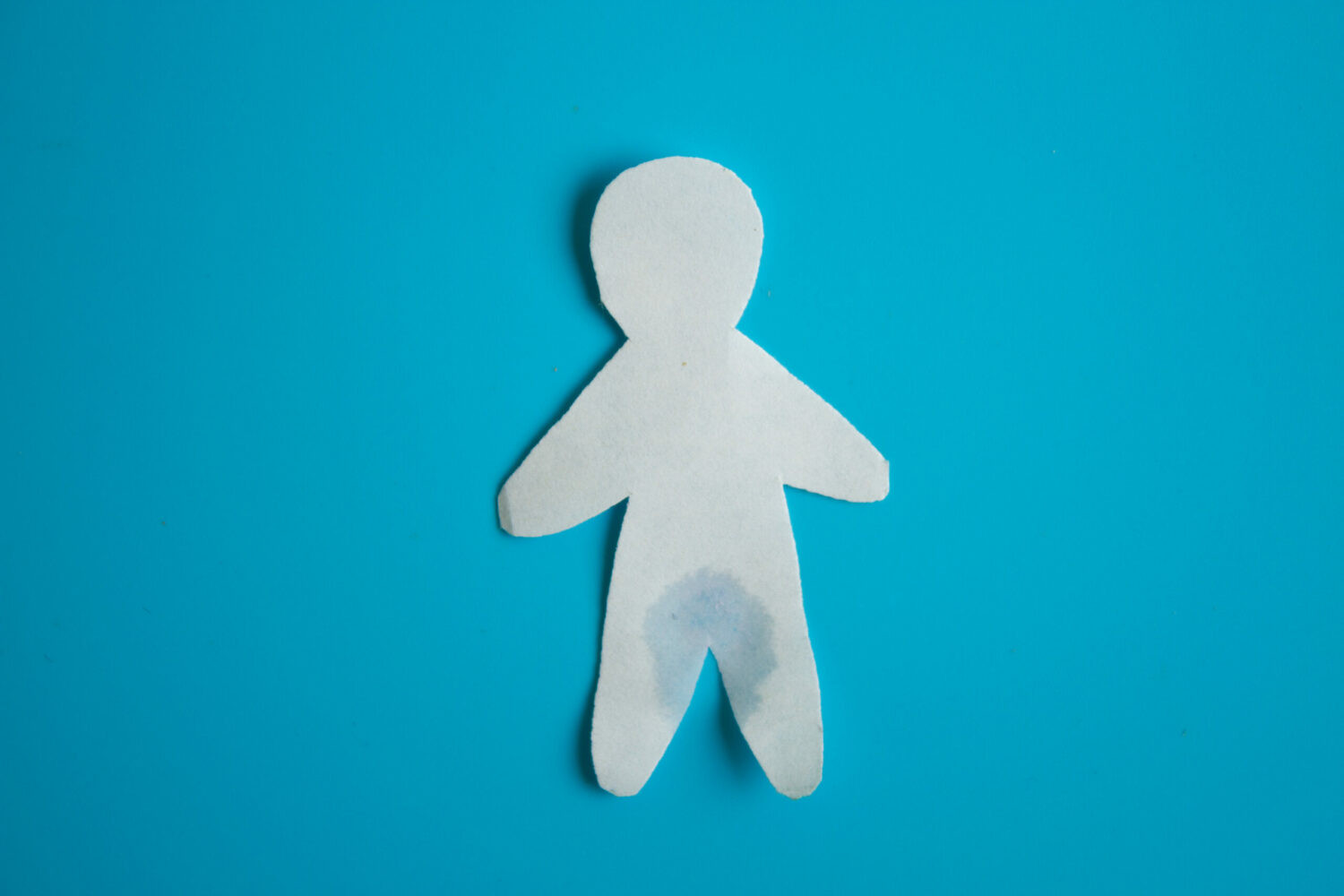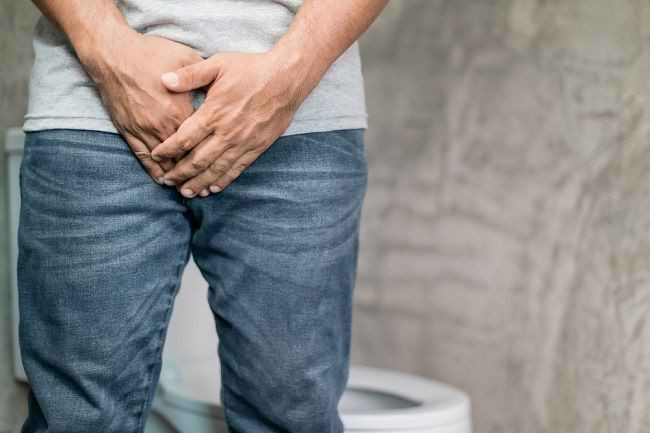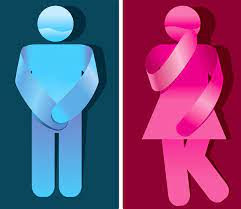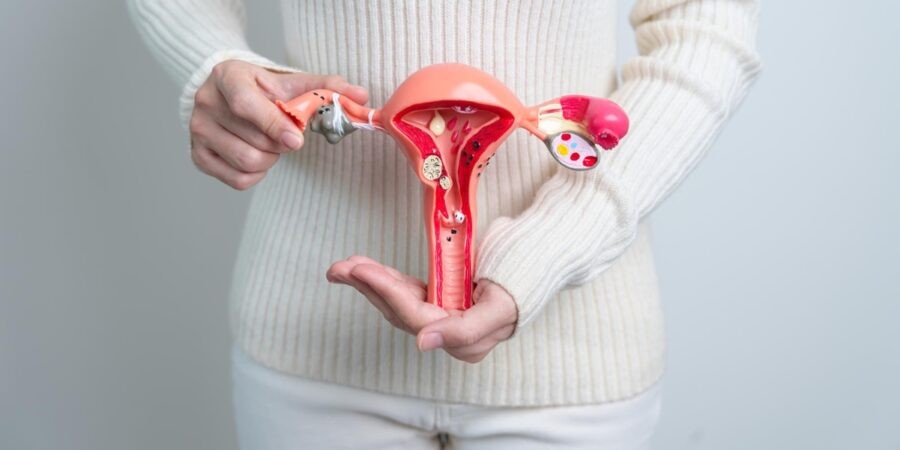Definisi
Inkontinensia urin adalah kondisi saat seseorang secara tidak sengaja mengeluarkan urin (buang air kecil), atau dikenal dengan kata mengompol. Proses melahirkan normal atau secara per vaginam (melalui jalan lahir) dapat meningkatkan seseorang untuk mengalami inkontinensia urin. Hal ini bisa dinyatakan sebagai efek samping umum yang dapat terjadi dan bisa mengalami perbaikan dalam beberapa waktu saat tubuh sudah mulai beradaptasi kembali sehingga inkontinensia urin dapat hilang sendirinya.
Berdasarkan data penelitian tahun 2019, diperkirakan satu dari tiga Ibu mengalami inkontinensia urin selama trimester kedua kehamilan hingga tiga bulan pertama setelah melahirkan. Inkontinensia urin lebih sering dialami pada perempuan dibandingkan laki-laki. Hal ini diduga disebabkan oleh perubahan hormonal yang sering terjadi selama kehamilan, persalinan, dan menopause sehingga menimbulkan inkontinensia urin.
Otot-otot dasar panggul bekerja untuk menopang kandung kemih. Selama kehamilan, dan setelah persalinan, terjadi perubahan hormonal dan anatomi, dan kekuatan otot dasar pinggul menjadi menurun. Beberapa orang dapat mengalami kerusakan otot dasar panggul selama proses persalinan berlangsung. Saraf yang mengendalikan kandung kemih juga dapat rusak selama proses persalinan terutama proses melahirkan secara normal atau per vaginam.
Inkontinensia urin pasca persalinan terjadi ketika seseorang tidak dapat mengendalikan kandung kemihnya. Hal ini mungkin dimulai selama kehamilan namun dapat terjadi setelah proses persalinan.
Ada dua tipe utama dari inkontinensia urin, yaitu inkontinensia tipe stress, dan inkontinensia tipe urgensi. Inkontinensia tipe stress terjadi ketika ada tekanan pada kandung kemih, misalnya saat bersin, batuk, tertawa, dapat mengompol, sedangkan inkontinensia tipe urgensi terjadi ketika seseorang memiliki rasa keinginan untuk buang air kecil yang tinggi namun mengompol sebelum mencapai kamar mandi.
Penyebab
Ketika Anda hamil, Anda akan menghasilkan hormone-hormon yang berperan untuk meregangkan otot-otot dan jaringan yang menopang kandung kemih, usus, dan Rahim. Kelompok otot ini dikenal dengan otot dasar panggul. Ketika bayi Anda turun melalui jalan lahir (vagina), otot-otot dasar panggul meregang dan tetap meregang dalam beberapa waktu ke depan. Kombinasi antara faktor hormonal dan otot-otot yang meregang inilah yang menyebabkan otot yang mengendalikan kandung kemih menjadi melemah. Hal ini yang dapat menyebabkan mengompol atau inkontinensia urin pasca persalinan.
Faktor Risiko
Berdasarkan departemen kesehatan di Australia, seseorang Ibu cenderung mengalami inkontinensia urin pasca persalinan saat:
- mereka sudah memiliki inkontinensia sebelum melahirkan
- mengalami masalah pada kandung kemih selama kehamilan
- mengalami persalinan yang lama
- melahirkan anak pertama
- melahirkan bayi besar
- mengalami kesulitan selama persalinan seperti membutuhkan jahitan atau adanya robekan tertentu pada area vagina
Berdasarkan penelitian tahun 2021, persalinan normal atau per vaginam dinyatakan sebagai faktor risiko besar untuk terjadinya inkontinensia urin tipe stress sedangkan orang dengan operasi caesar atau operaso sectio caesarian mungkin memiliki risiko yang lebih kecil untuk mengalami inkontinensia tipe stress dibandingkan persalinan per vaginam.
Gejala
Pasien dengan inkontinensia urin akan mengompol secara tidak sengaja. Beberapa gejala lainnya adalah spasme atau tegang otot dan adanya tekanan pada area panggul, buang air kecil selama tidur malam, pergi ke kamar mandi lebih dari 8 kali per hari atau lebih dari 2 kali tiap malamnya. Mengompol akibat inkontinensia tipe stress dapat terjadi akibat aktivitas tertentu seperti olahraga, tertawa, batuk, bersin, atau mengangkat benda berat. Sedangkan gejala mengompol akibat tipe urgensi dapat berupa buang air kecil yang tiba-tiba dan tidak bisa ditahan.
Diagnosis
Diagnosis inkontinensia urin pasca persalinan adalah diagnosis yang dapat ditegakkan melalui wawancara medis, pemeriksaan fisik, hingga pemeriksaan penunjang bila tersedia dan diperlukan untuk dilakukan.
Pada wawancara medis, dokter akan menanyakan gejala yang dirasakan oleh pasien saat ini. Gejala-gejala yang ada dapat mengarahkan ke suatu penyakit tertentu sehingga Anda perlu mengutarakan gejala yang dirasakan selengkap mungkin dan disertai dengan sejak kapan gejala tersebut mulai dirasakan. Informasi ini penting bagi dokter dalam rangka menegakkan diagnosis medis tertentu. Apabila gejala yang dirasakan mengarahkan ke penyakit inkontinensia urin pasca persalinan, maka dokter akan melanjutkan ke pemeriksaan fisik dan pemeriksaan penunjang.
Pada pemeriksaan fisik, dokter akan melakukan pemeriksaan sesuai dengan gejala yang dirasakan oleh pasien sehingga dapat ditemukan beberapa tanda klinis yang adalah tanda objektif yang didapatkan oleh dokter melalui pemeriksaan fisik.
Pada kasus inkontinensia urin pasca persalinan, dokter dapat menemukan adanya spasme atau tegang otot pada area panggul dan adanya riwayat persalinan melalui pervaginam.
Pemeriksaan penunjang juga memiliki peran dalam menegakkan atau memastikan diagnosis dari inkontinensia urin pasca persalinan. Pemeriksaan penunjang seperti pemeriksaan urinalisis dapat menyingkirkan kemungkinan adanya infeksi sebagai kemungkinan lain dari mengompol yang dialami Ibu.
Tata Laksana
Seseorang dengan inkontinensia urin pasca persalinan dapat mencoba atau mengubah gaya hidup dan obat-obatan untuk mengendalikan penyakitnya. Beberapa hal yang dapat membantu misalnya memakai absorben pad. Absorben pad seperti pembalut atau popok, dapat digunakan di dalam celana dalam untuk menampung buang air kecil yang keluar tiba-tiba sehingga dapat diserap langsung oleh popok. Selain itu, latihan untuk otot dasar panggul seperti senam Kegel dapat membantu untuk menguatkan otot-otot dasar panggul. Selain itu ada cincin cincin pessarium yaitu suatu alat yang digunakan untuk menopang uretra dan mencegah mengompol yang cara penggunaannya dimasukkan ke dalam vagina.
Ada juga beberapa obat yang dapat membantu untuk meringakan kejadian inkontinensia urin pasca persalinan. Obat-obatan yang ada harus diresepkan langsung oleh dokter yang memeriksa sehingga dokter dapat memantau kemajuan atau perkembangan klinis dari pasien.
Komplikasi
Komplikasi umumnya jarang terjadi. Secara khusus, mengompol dapat membuat seseorang mengalami malu dan menurunnya kualitas hidup sehingga rasa cemas dan depresi dapat muncul sebagai komplikasi psikologis dari kasus inkontinensia urin pasca persalinan. Selain itu, komplikasi yang dapat muncul adalah masalah kulit seperti bercak merah atau infeksi kuilt yang dapat muncul pada area kulit yang basah. Infeksi saluran kemih juga dapat muncul apabila inkontinensia berlangsung lama.
Pencegahan
Hingga saat ini belum ada pencegahan yang bermakna untuk terhindar dari kasus inkontinensia urin pasca persalinan. Meskipun demikian, ada beberapa hal yang dapat menurunkan risiko terjadinya inkontinensia urin pasca persalinan yaitu konsumsi makanan dengan gizi seimbang, menghindari rokok, menghindari minum alcohol, berolahraga rutin, dan cukup istirahat. Olahraga seperti senam kegel juga dapat dilakukan untuk meningkatkan kekuatan otot panggul pasca persalinan sehingga inkontinensia urin tidak berlangsung lama pasca persalinan.
Kapan Harus ke Dokter?
Jika Anda mengalami perburukan gejala yang sudah ada seperti masalah kandung kemih selama 6 minggu pasca persalinan (mengompol lebih sering pasca persalinan), sebaiknya Anda memeriksakan diri lebih lanjut ke dokter spesialis penyakit dalam (Sp.PD) atau spesialis urologi (Sp.U) atau spesialis kandungan dan kebidanan subspesialis uroginekologi (Sp.OG-K(Urogin)). Dokter akan melakukan wawancara medis, pemeriksaan fisik, hingga pemeriksaan penunjang tertentu untuk menetapkan diagnosis pasti dari penyakit yang mendasarinya dan tata laksana yang tepat dan sesuai kebutuhan.
Mau tahu informasi seputar penyakit lainnya? Cek di sini, ya!
- dr Anita Larasati Priyono
WebMD. Urinary incontinence and pregnancy. July 2021. https://www.webmd.com/urinary-incontinence-oab/pregnancy
Pregnancy Birth and Baby. Bladder weakness after birth. May 2021.
https://www.pregnancybirthbaby.org.au/bladder-weakness-after-birth
University of Colorado. Incontinence after childbirth. July 2022. https://urogyn.coloradowomenshealth.com/conditions/bladder/incontinence-after-childbirth.html











